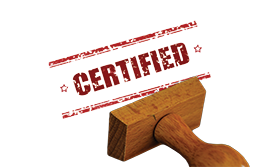

In previous articles in the series on fire standards, we discussed the two main standards required for fire detection systems, namely, SANS 10400-T and SANS 10139. (See the last article at www.securitysa.com/24268r). We continue with fire detection standards by now looking at SANS 322 – Fire Detection and Alarm Systems for Hospitals.
While SANS 10139 remains the primary standard for fire detection systems, SANS 322 specifically addresses systems to be installed within hospitals or similar buildings. SANS 322 allows for some deviations from the SANS 10139 recommendations. Being a hospital, there are specific sensitive areas where certain detection equipment cannot be installed. We shall first take a look at sounders.
Sounders, according to SANS 10139, need to have a dB (Sound Pressure) operational rating of 65 dB or 5 dB above the ambient noise. In hospitals, this rating is only required in non-patient areas, such as service areas, typically including the foyer or main entrance of a hospital. This area normally has facilities such as a dispensary, gift shop, café, doctors’ rooms, etc. In patient areas, a dB rating of 45 dB to 55 dB or 5 dB above ambient noise is considered suitable.
Additionally, you would not want the surgeon conducting your brain surgery to suddenly have a sounder going off in the theatre. Therefore, visual alarms may be used in these areas. The same can be said for ICUs, critical care, etc. Additionally, visual alarms may be utilised at nurses’ stations. In wards or areas where patients can escape unaided, normal audible alarms may be utilised.
Manual call points also have some additional criteria compared to SANS 10139. In non-patient areas, manual call points must be installed as per SANS 10139, however, the additional criteria are as follows: In patient access areas, manual call points shall be installed at or close to each nurse’s station, at each exit or stairway (but not on stairway landings) and on both sides of main doorways between detection zones (in close proximity to the doors). SANS 322 further provides instructions for mental health facilities where manual call points may deviate from SANS 10139 if false alarms are likely to occur due to the deliberate operation of call points by patients. In these cases, manual call points need not be readily accessible to patients. However, they must be easily accessible to staff.
The category of system, as per SANS 10139, must be a Manual (M) and L1 category system. Detectors may only be omitted from areas based on a fire risk assessment. The detection system must be equipped with facilities for disabling fire detectors without isolating manual call points. Control and indicating equipment must be provided at the main entrance of the hospital as well as the entrance where the fire department will most likely enter.
Lift homing must, in the event of an alarm, return to the ground floor or the level of the final exit from the building and be disabled. The fire alarm system shall not control lifts specifically designed for emergency evacuation beds.
The fire alarm system must be monitored by a manned 24-hour remote monitoring station or fire brigade, and should follow the recommendations in SANS 10139.
Additional information pertaining directly to a hospital is available in SANS 322. However, it should be noted that SANS 322 must be used in conjunction with SANS 10139. All relevant handover procedures and documentation shall be followed as per SANS 10139.
SAQCC Fire can provide guidance on the requirements for fire detection systems in healthcare facilities, including hospitals. Please consult the website www.saqccfire.co.za for contact information.

© Technews Publishing (Pty) Ltd. | All Rights Reserved.